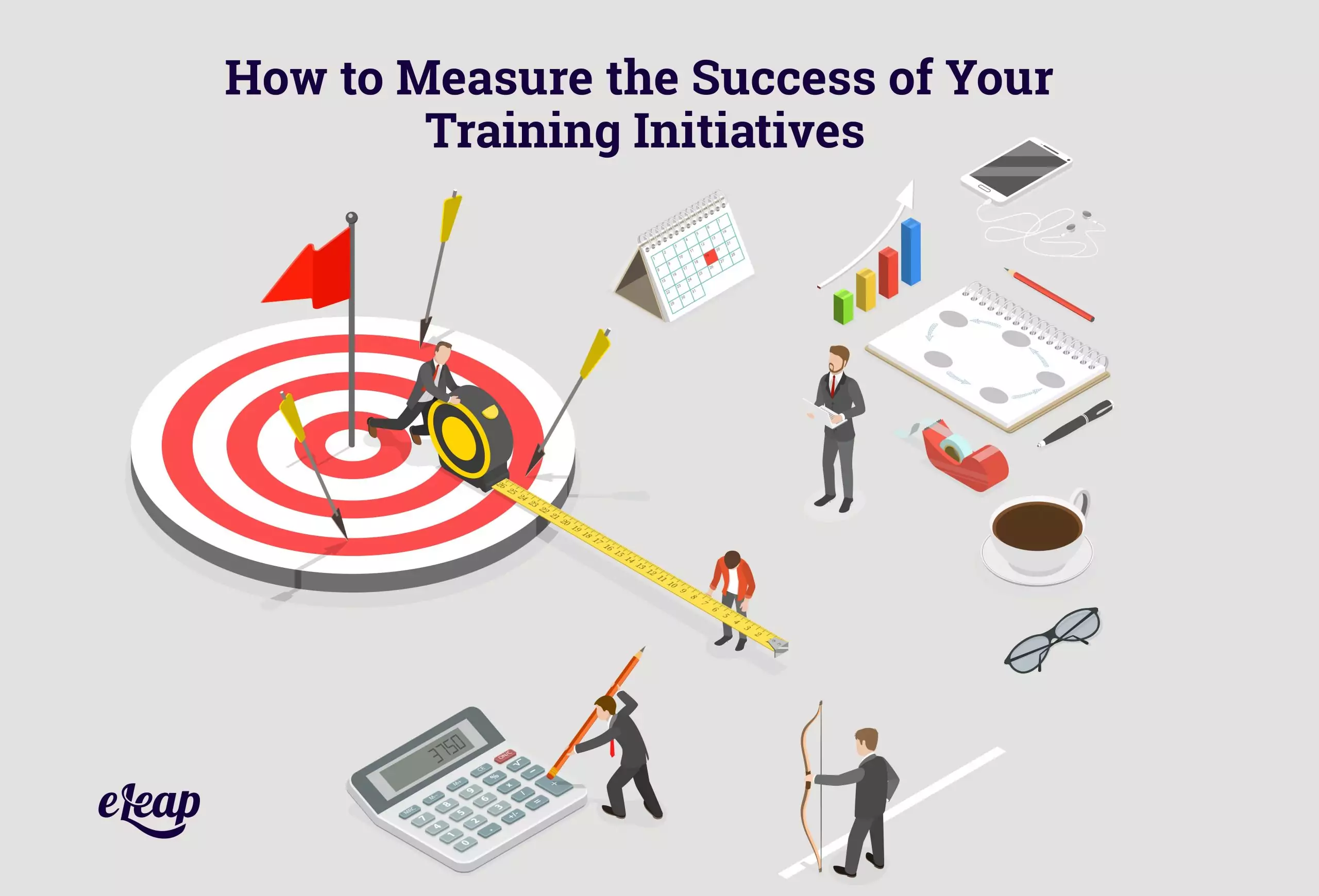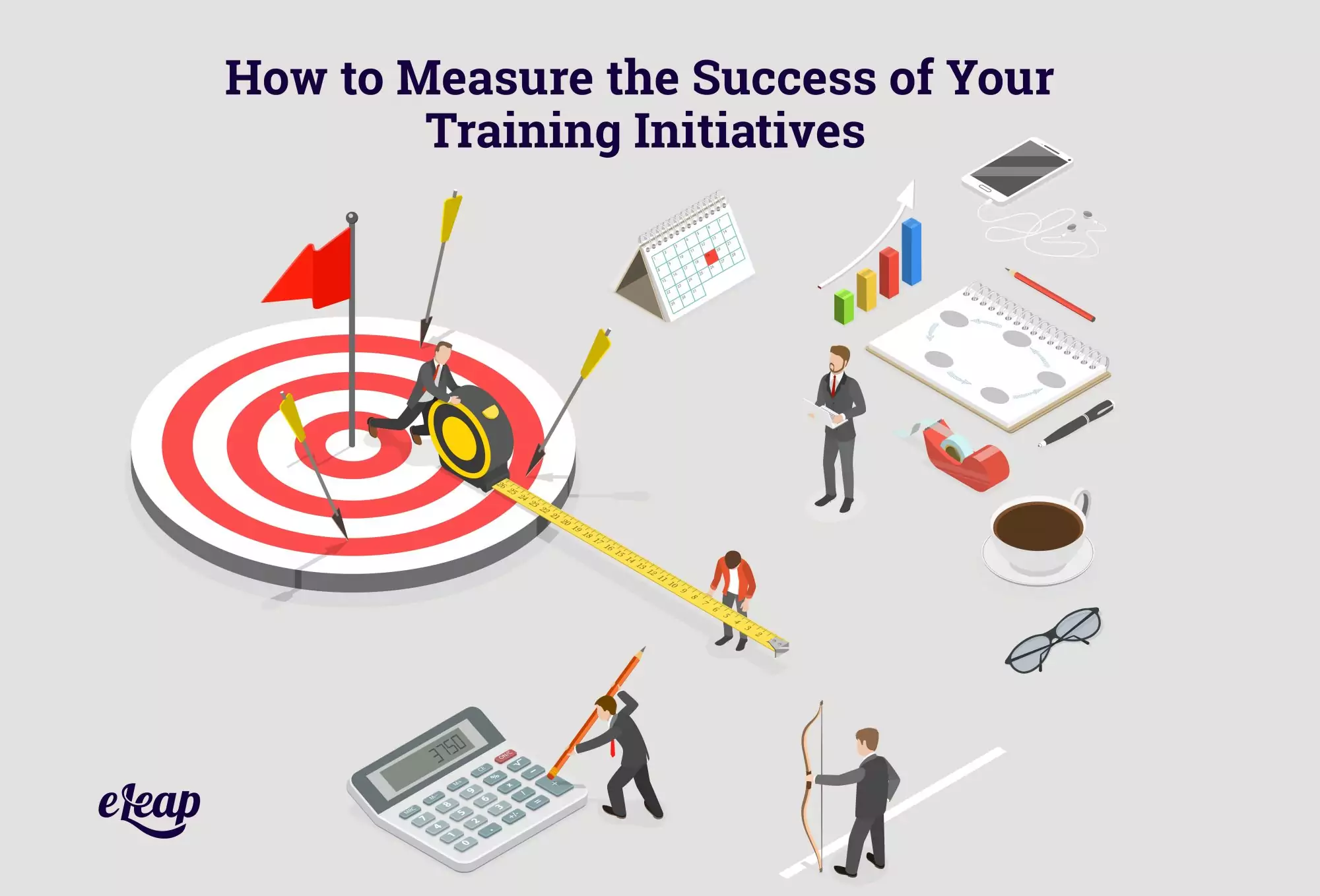How to Measure the Success of Your Training Initiatives

The only yardstick by which to measure the value of L&D is the success of your learners. Simply put, nothing else matters. If your learners are not able to retain the information being taught, or they are unable to apply those lessons in the real world, then your system is broken.

The challenge here is that it can be difficult to measure the effectiveness and success of your training initiatives. How can you possibly take the pulse of every employee who has completed L&D modules? Is it even possible to gauge whether learners are applying the skills they have learned within their roles in the organization?
The truth is that there are several ways to measure training initiative success. Download the free white paper, “How You Can Assess The Effectiveness of Your Training – Kirkpatrick Model” to get started. In this post, we will explore some of the options available and what they bring to the table.
Why Measure Effectiveness?
Before anything else, it is important to discuss why measuring effectiveness matters in the first place. One reason is simply to justify the significant investment the organization has made into learning and development. Around the world, more and more organizations are seeing the need for training. Investments in L&D have soared. However, along with the increased rate of investment, there is a need to show a return on that investment. Because L&D results don’t correlate directly to monetary gains, tracking those returns is hard. The simplest solution is to measure successful outcomes for learners.
Another reason is that L&D can be something of a guessing game. Yes, it’s based on logic and sound principles, but, sometimes, finding the right approach can take a little bit of trial and error. Take for instance the process of finding the right type of content for each learner. Some people learn better by reading, others by doing, and yet others by listening. It is necessary to create content that delivers training in the right format for each person, but defining what’s “best” will take a little time and experimentation (as well as the use and refinement of learner personas).
The Measurement Methods
Now that we have a better understanding of why it is important to measure training effectiveness and success, we must turn our eyes to how to achieve that. It can be surprisingly simple, and we’ve highlighted several methods below.
Scores and Traditional Metrics
Perhaps the simplest and most widely used way to measure effectiveness is judging based on scores and other traditional metrics. For instance, learners might complete a unit quiz after completing a module that helps determine whether they have retained enough information to move on, or if the module should be taken again. The same thing applies to end-of-unit tests. These are more comprehensive than unit quizzes, but the same concept applies – they measure overall information retention and gauge whether the learner is ready to move on.
Before and After Skills Assessments
Another option that can help provide insight into the value and success of your training program is to conduct before and after skills assessments. While each situation will vary, they all follow a similar flow. First, the training manager must understand what is being taught – what’s the point of the skills development course? Next, create an intake assessment designed to measure employees’ competency in that skill or skillset. Finally, create an outbound assessment designed to test their skill after completing the course or module. Compare the intake assessment to the outbound assessment and measure the progress.
Simple Observation
The goal of training is to imbue employees with new skills or to improve existing ones. In all situations, the proof of the pudding is in the eating, so to speak. In other words, if you truly want to measure whether an employee was able to retain the information learned in the course, observe them apply those skills in the real world. How well does John explain the company’s products after completing that sales module? Is Sasha able to implement the new inventory management skills she learned to control shrink? Observation of real-world skills application is perhaps the most direct way to measure training initiative success. Use the Observation checklist tool in eLeaP to perform observation assessments.
Social Ownership
To assess whether an employee has really mastered a subject, put them in a position to teach others. This could be in a traditional classroom setting, certainly, but it could also be in other situations, such as through a mentorship program, within a digital learner forum, and even within a team setting. This method gives managers a defined way to judge how well an employee has retained the information and mastered the ability of applying new skills simply by observing how well they can train others.
Ask Them
Finally, you might consider surveying your learners. The three basic questions you should attempt to answer are as follows:
- How effective was the training? Did it help learners gain relevant knowledge or learn new skills?
- Were your learners able to apply the skills/knowledge in their everyday life?
- Did the program achieve other important benefits?
Of course, you need not ask those questions directly. There are many different ways to gauge program success through surveys. For instance:
- Did the course/module provide you with a good understanding of the topic/skills?
- Did the course/module provide you with the means to directly apply new knowledge or skills in your job duties?
- Discuss one way that you have been able to improve job performance/outcomes using the information/skills taught during the module.
- Do you feel that the course/module adequately delivered training? If not, why not?
- What would you change about the course/module to make it more effective?
- Would you recommend that others with similar career/job needs complete this module?
Really, the questions can be as many and varied as you like, but they should all be geared to surfacing answers to the three questions we discussed above.
Keep On Keeping On
Once you have measured the success of your training initiatives, it’s time to apply what you’ve learned and evolve your content and approach to L&D. Then, measure and assess again. Rinse and repeat. There is no finish line here – ensuring relevance, quality, and veracity is an ongoing process.